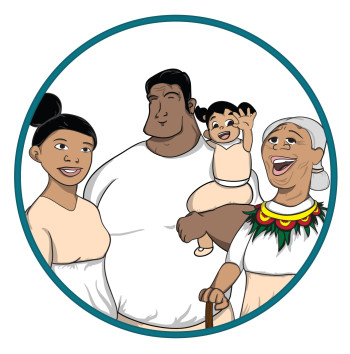 Te Tāhū Hauora is committed to its enduring priorities of embedding and enacting Te Tiriti o Waitangi and pursuing health equity.
Te Tāhū Hauora is committed to its enduring priorities of embedding and enacting Te Tiriti o Waitangi and pursuing health equity.
Initially Pacific models for engagement resources were developed for use internally within our organisation to help put Pacific methodologies, frameworks and epistemologies at the centre of our thinking when considering working with our Pacific communities.
We are now making them available for the sector to use, digest, consider and implement into their engagements and co-design with Pacific communities.
The resources represent ‘bread and butter’ models that can enhance your understanding and practice. They are intended to be used with a wayfarer to guide you through their application. Please get in touch with our equity team here to discuss and unpack these resources together.
You can view these resources as one PDF here.
Fa’afaletui
View this resource as a PDF here.
What does it mean?
Fa’afaletui [1], a Samoan research framework, literally means ‘ways of’ [fa’a] ‘weaving together’ [tui] deliberations of different groups or ‘houses’ [fale]. Fa’afaletui, for Samoans is the critical process of weaving together all the different levels of knowledge frames from within the ‘houses’ of collective representation, so that the Samoan worldview is substantially enhanced, and added to.
Fa’afaletui is derived from the Pacific philosophy of connectedness and a collective holistic approach that enables culturally appropriate insight and intel finding. The different fale also embody the perspectives that are needed:
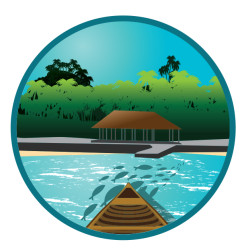
The view from the canoe: Closest to the school of fish the view of those doing the work or affected by the ocean and environment
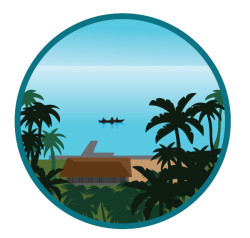
The view from the treetops: Provides the management and operational view
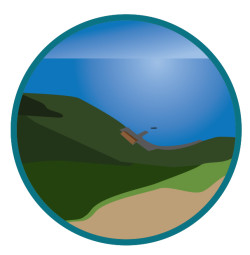
The view from the mountain: Provides line of sight
Whose agenda are you working to, and who will benefit?
What story does the community want to tell? How does the community share their stories now?
What collective of diversity of skills, knowledge and capabilities is needed for inclusive decision-making processes?
Fofola e fala
View this resource as a PDF here.
‘Fofola e fala kae talanoa e kāinga’ – Roll out the mat so the family can dialogue
What does it mean?
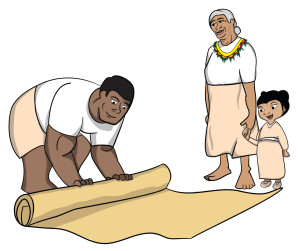 The fofola e fala [2] kae talanoa e kāinga metaphor is a representation of Tongan culture that creates the space for and empowers every member of the kāinga (family) to talanoa openly and honestly. On the fala, all are present, all can contribute, all can be heard.
The fofola e fala [2] kae talanoa e kāinga metaphor is a representation of Tongan culture that creates the space for and empowers every member of the kāinga (family) to talanoa openly and honestly. On the fala, all are present, all can contribute, all can be heard.
The fala, or mat, symbolises safety and equal ground. In the utilisation of this metaphor, there is no hierarchical social structure or status, there is no partiality, and everyone has a voice, including children and youth.
There is still the respect for the sister–brother relationship, respect for your elders and respect for your parents, but on the fala everyone is the same.
How do we create space (physical space, digital space, spiritual space and mental space) for robust talanoa to occur?
How do you ensure the space you create represents what the fala represents?
How does the community like to be approached and engaged with, and what is the appropriate gateway?
Kakala
View this resource as a PDF here.
What does it mean?
The kakala [3,4] is a metaphor and an analogy about making garlands or kahoa. There is a method and process to making specific garlands for specific occasions. As with the process of making the kakala, we can follow the same thinking when applying the process to monitoring, research, evaluation and co-design.
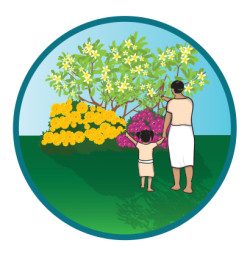
Teu – conceptualisation
What garland am I going to make and for what purpose? What flowers do I need?
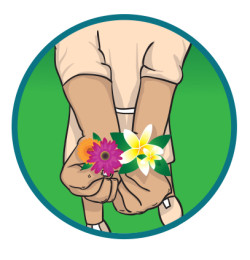
Toli – collation
Where do I get the flowers from? How do I get them?
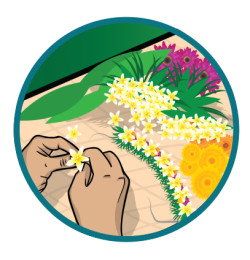
Tui – weaving
How do I put the garland together? Have I put it together so that it makes sense?
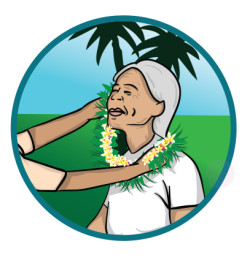
Luva – gifting
How am I going to gift this garland?
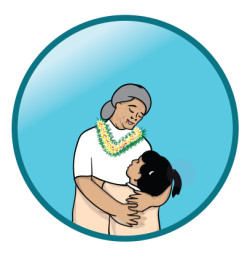
Mālie – ‘well done’
How did the recipient feel when receiving this garland?
Did it deliver the feeling that was intended?
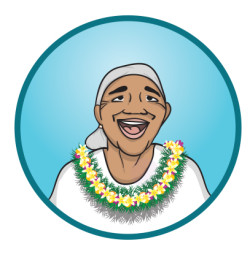
Māfana – warmth
Was it useful and did the recipient feel warmth and moved to continue the gifting of the garland and the feeling or usefulness that was generated? What were the impacts and results of the process of all involved in the kakala process?
Can you gather meaningful information from Pacific communities if you use ‘mainstream’ western frameworks and methods?
How will reporting processes give voice to Pacific peoples and protect the knowledge systems of Pacific communities?
Are emerging solutions meaningful, sustainable strategies for Pacific communities to tackle real problems? What is the community trying to find a solution to?
Talanoa
View this resource as a PDF here.
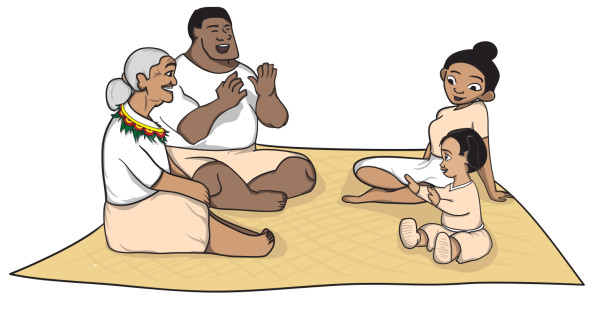
What does it mean?
Tala means to talk, tell. Noa means the void, empty space, zero or the sense of balance and harmony. In talanoa [5,6], it is the sum of noa and tala that adds to the total concept.
Talanoa is often expressed as a conversation, but it is more than that. Four protocols need to be fulfilled for rich conversation and honest sharing.
- Faka’apa’apa – respect, humility
- ‘Ofa – love
- Māfana – comfort, warmth
- Mālie - humour, connection
These four protocols, when activated, allow the safety of topics to be raised, the respect for sharing, the love for reciprocity and understanding in the exchange of ideas, the warmth and comfort of no judgment, the malie to laugh and cry in the exchange of stories and emotions.
How will health services seek to listen to understand and act?
What disaggregated data or soft intelligence do we need to understand our ethnic groups’ aspirations and needs in the community?
How do you create opportunities for communities to say what they think and experience and not what they think you want to hear?
Vā
View this resource as a PDF here.
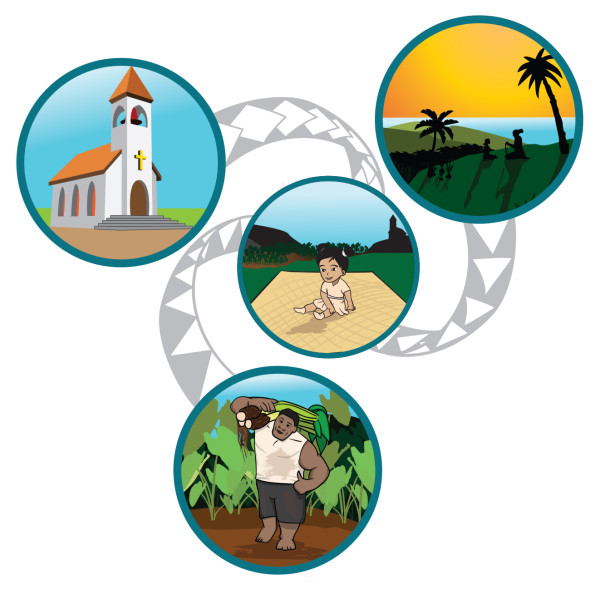
What does it mean?
The vā [7,8] describes the spatial and relational context in which relationships unfold.
With le vā, relationships are given time and space and are valued so that all involved may benefit.
Relational spaces are prioritised to maintain sacred space, harmony and balance.
Our vā or relationship with others defines us. Le vā is also about how we are within the space; encompassing principles such as reciprocity, respect, and mutual trust.
- Teu le vā – establishing and/or repairing the space/relationship
- Tausi le vā – maintaining and progressing the space/relationship
- Soli le vā – the space that needs work or has been trampled and will have to be addressed
How do we make space for communities to ensure balanced reciprocity of giving and taking?
How do you/your team reflect on the quality of your relationships?
What structures/mechanisms could ensure that health care staff and professionals are ‘on tap’ as resources versus ‘on top’ as deciders?
Footnotes
[1] Tamasese K, Peteru C, Waldegrave C. 1997. Ole Taeao Afua: a qualitative investigation in Samoan perspectives on mental health and culturally appropriate services. Report for the Health Research Council of New Zealand. Wellington: The Family Centre.
[2] Havea S, Alefaio-Tugia S, Hodgetts D. 2021. Fofola e Fala ka e Talanoa e Kainga: A Tongan approach to family violence prevention and intervention. Journal of Pacific Rim Psychology 15.
[3] Thaman KH. 1997. Kakala; A Pacific concept of teaching and learning. Paper presented at the Australian College of Education National Conference, Cairns.
[4] Johansson Fua S. 2014. Kakala Research Framework: A Garland in Celebration of a Decade of Rethinking Education. Of Waves, Winds and Wonderful Things: A Decade of Rethinking Pacific Education. 50–60.
[5] Vaioleti TM. 2006. Talanoa research methodology: A developing position on Pacific research. Waikato Journal of Education 12: 21–34.
[6] Vaioleti TM. 2011. Talanoa, manulua and founga ako: Frameworks for using enduring Tongan educational ideas for education in Aotearoa/New Zealand (Unpublished doctoral thesis). University of Waikato, Hamilton, New Zealand.
[7] Anae M. 2005. Teu le va: ‘New’ directions in thinking about doing Pacific health research in New Zealand. Paper presented at the Centre for Pacific Studies, University of Auckland Pacific Scholars Postgraduate Seminar Series.
[8] Anae M. 2007. Teu le va: Research that could make a difference to Pasifika schooling in New Zealand. Paper commissioned by the Ministry of Education and presented at the joint NZARE/Ministry of Education symposium ‘Is your research making a difference to Pasifika education?’ in Wellington.
